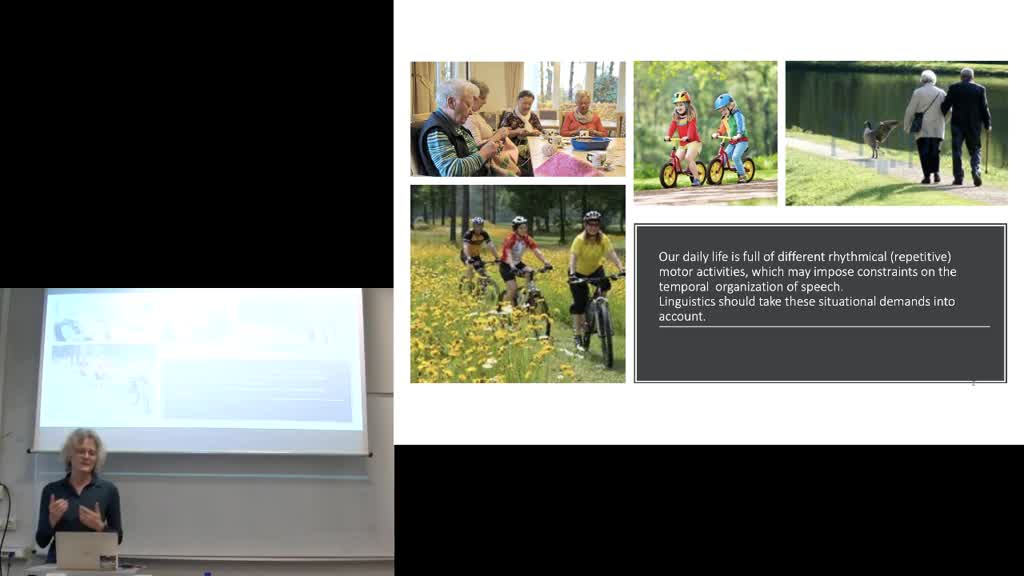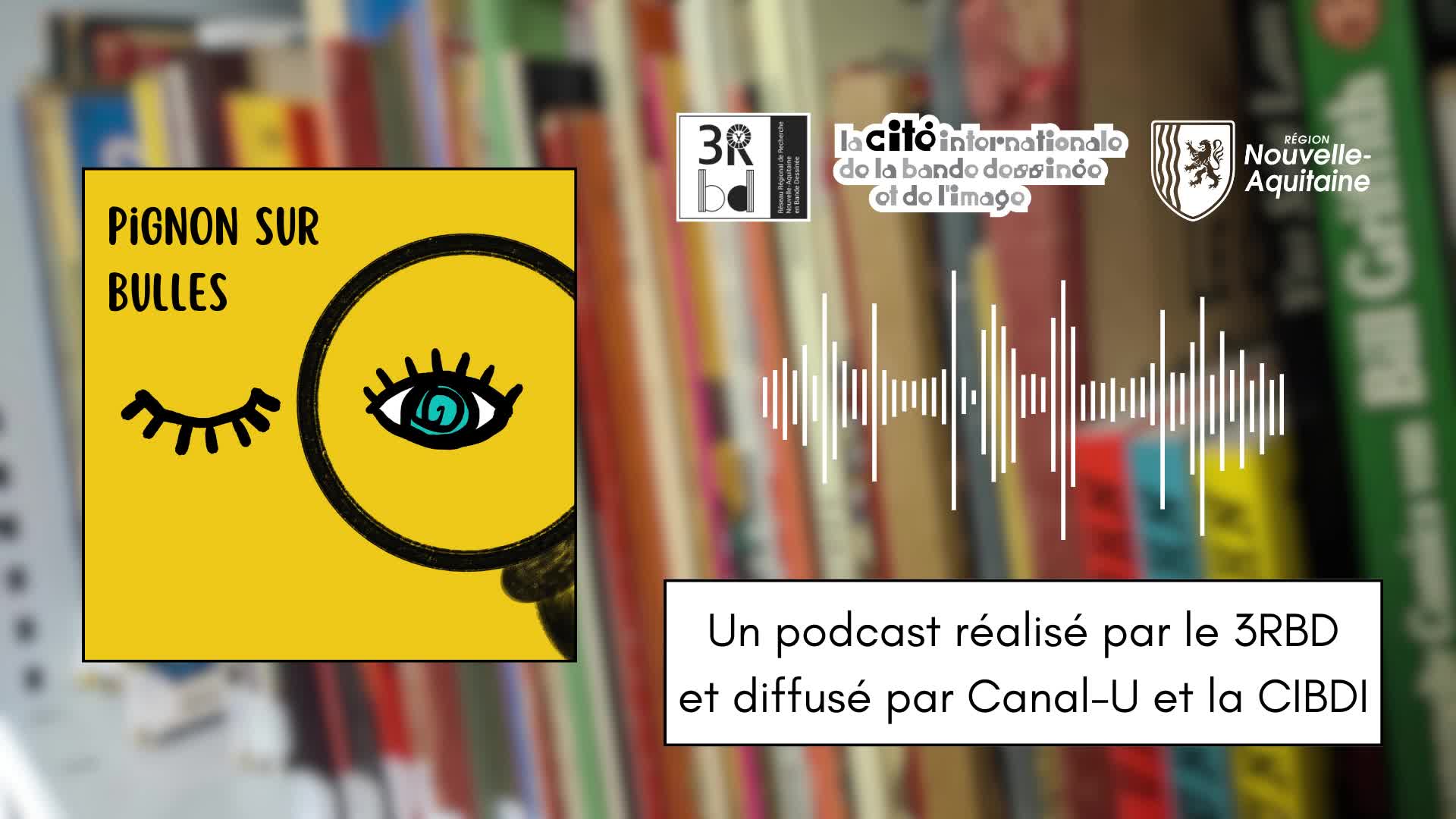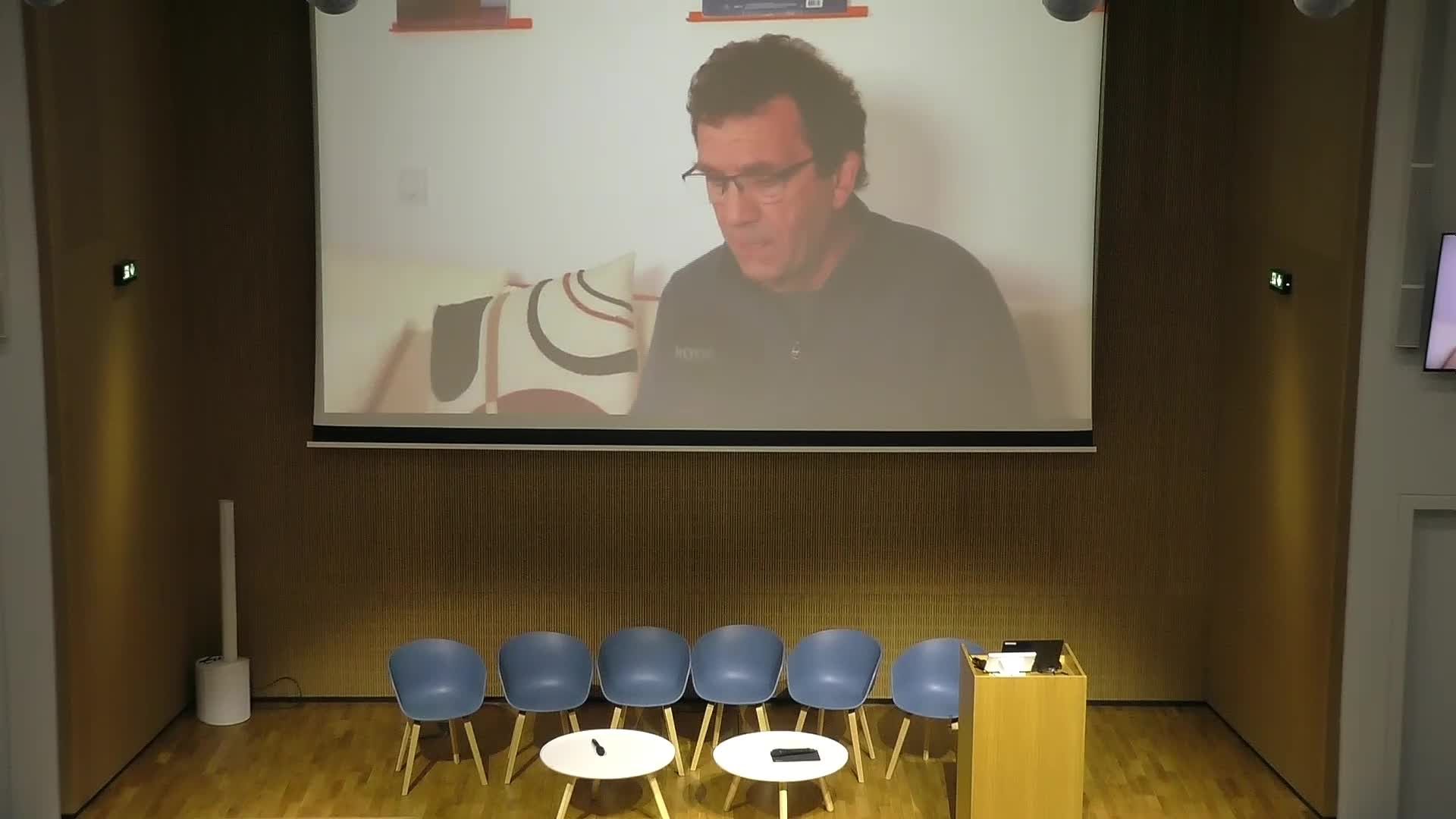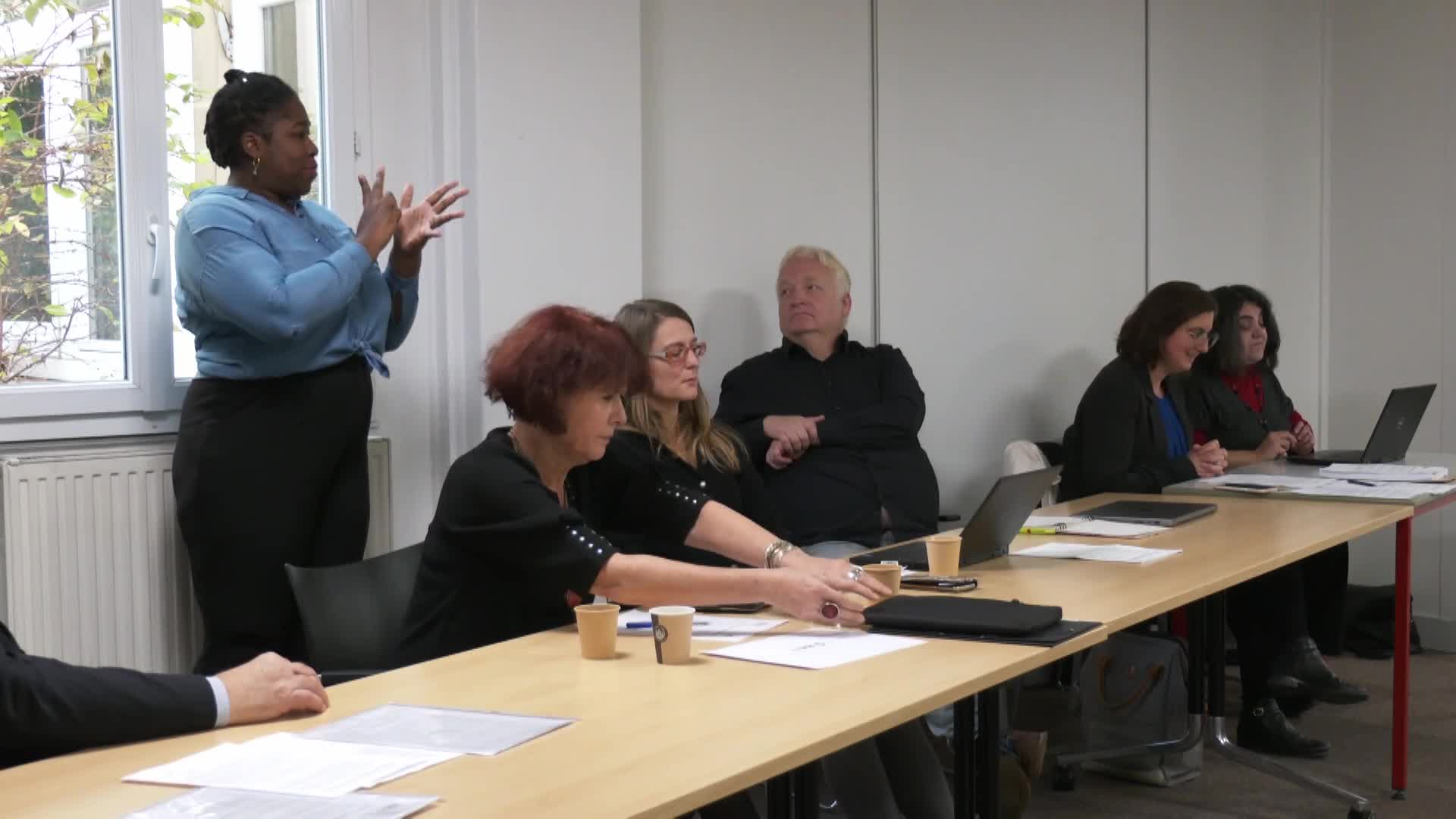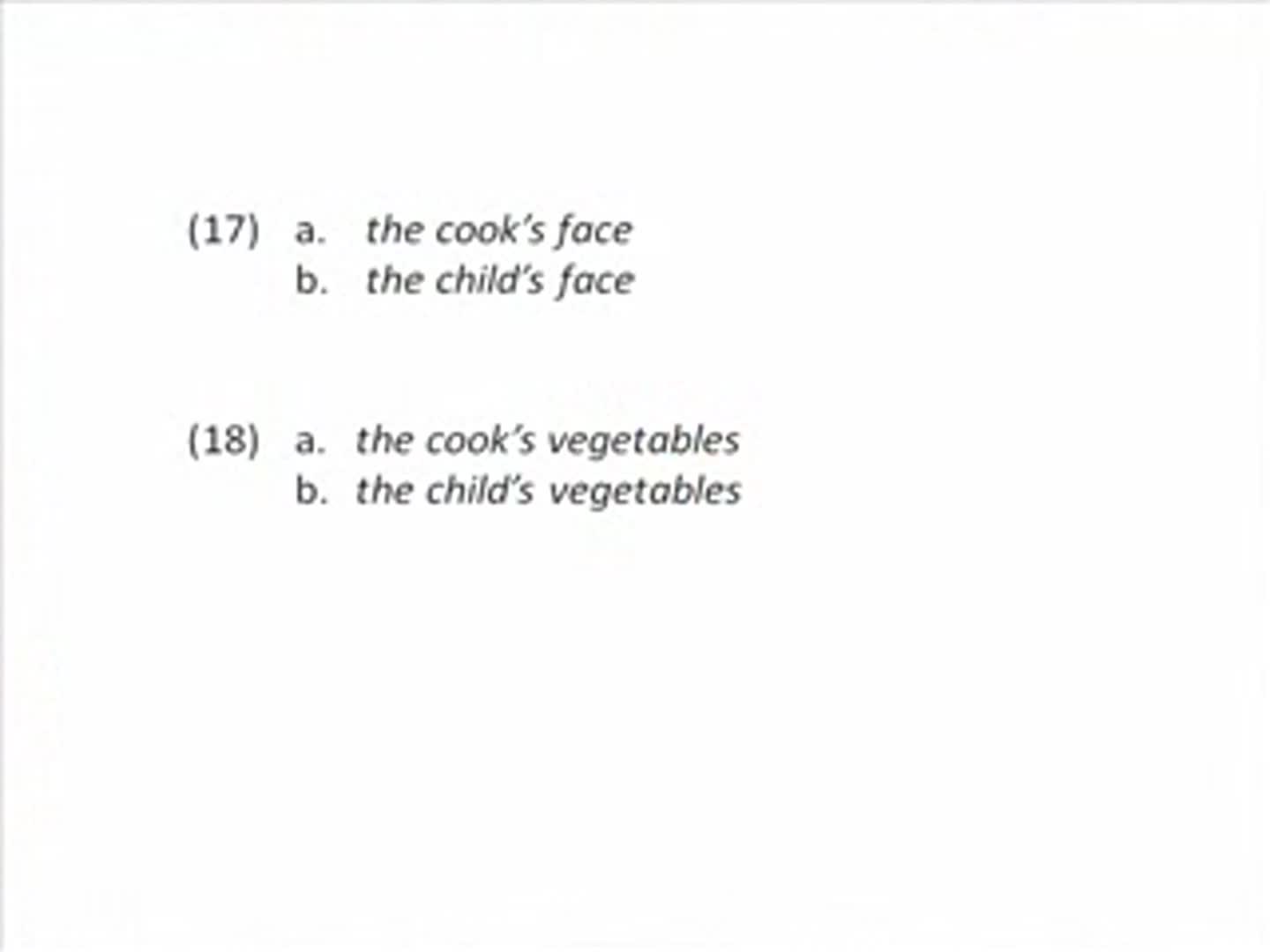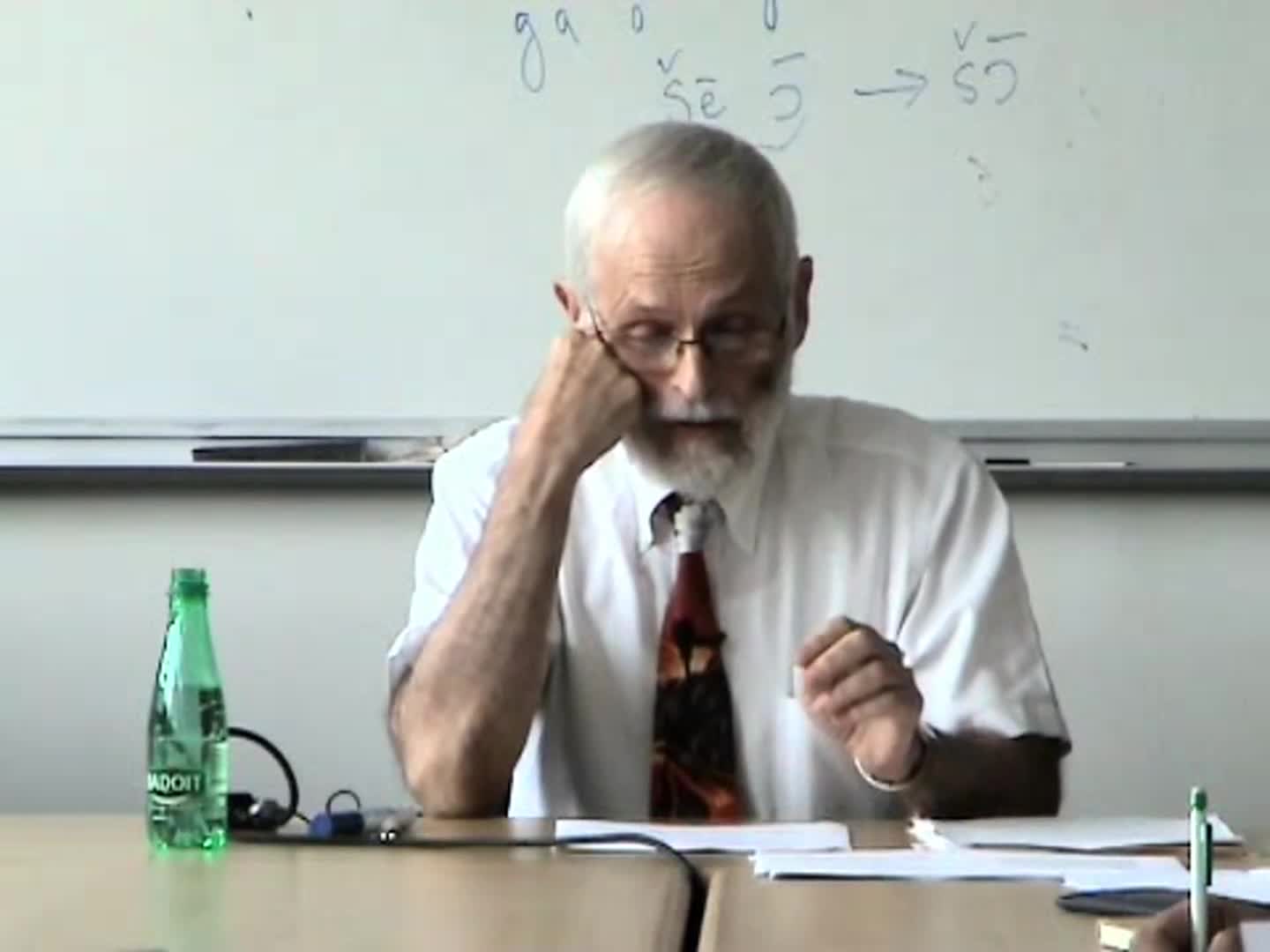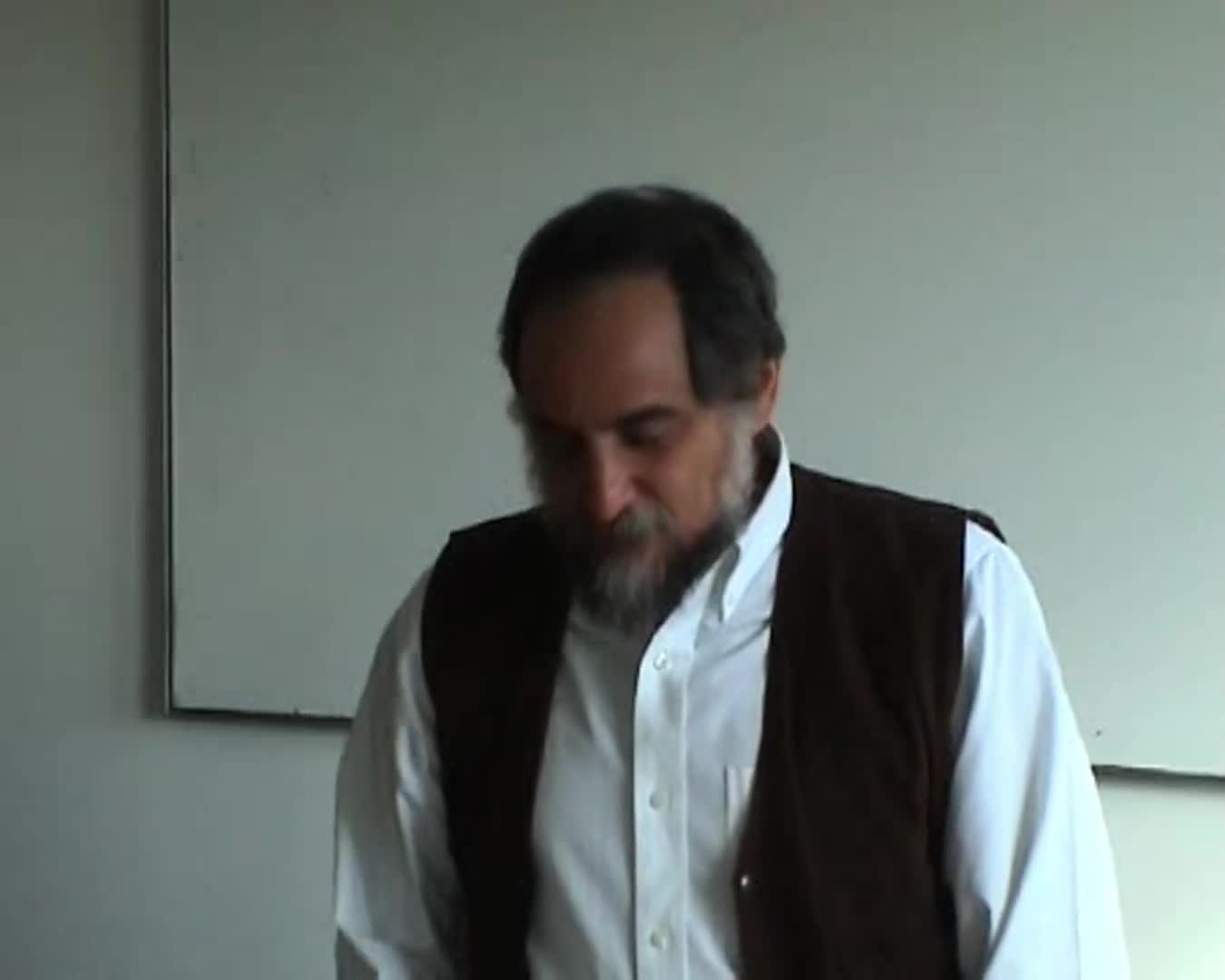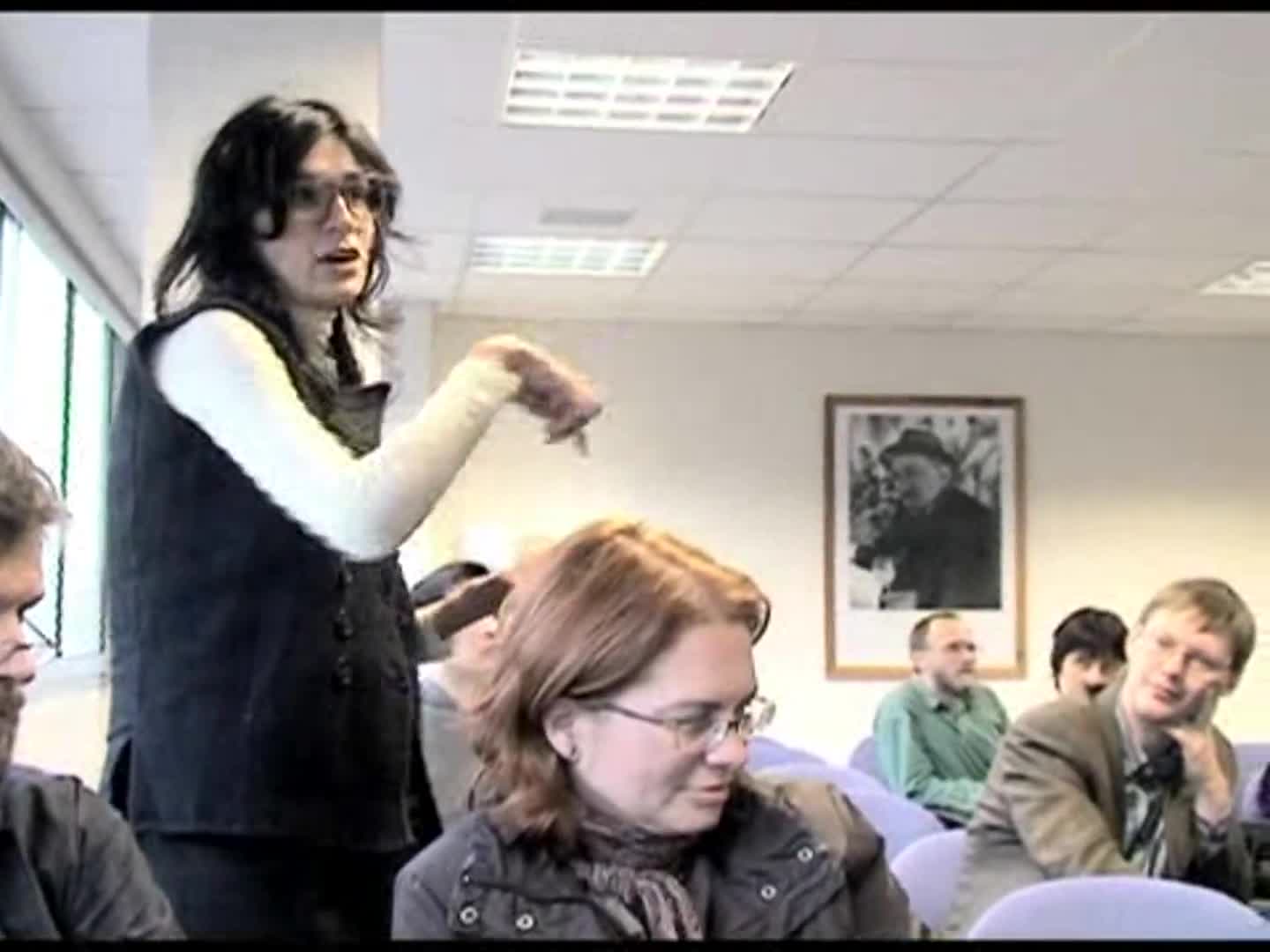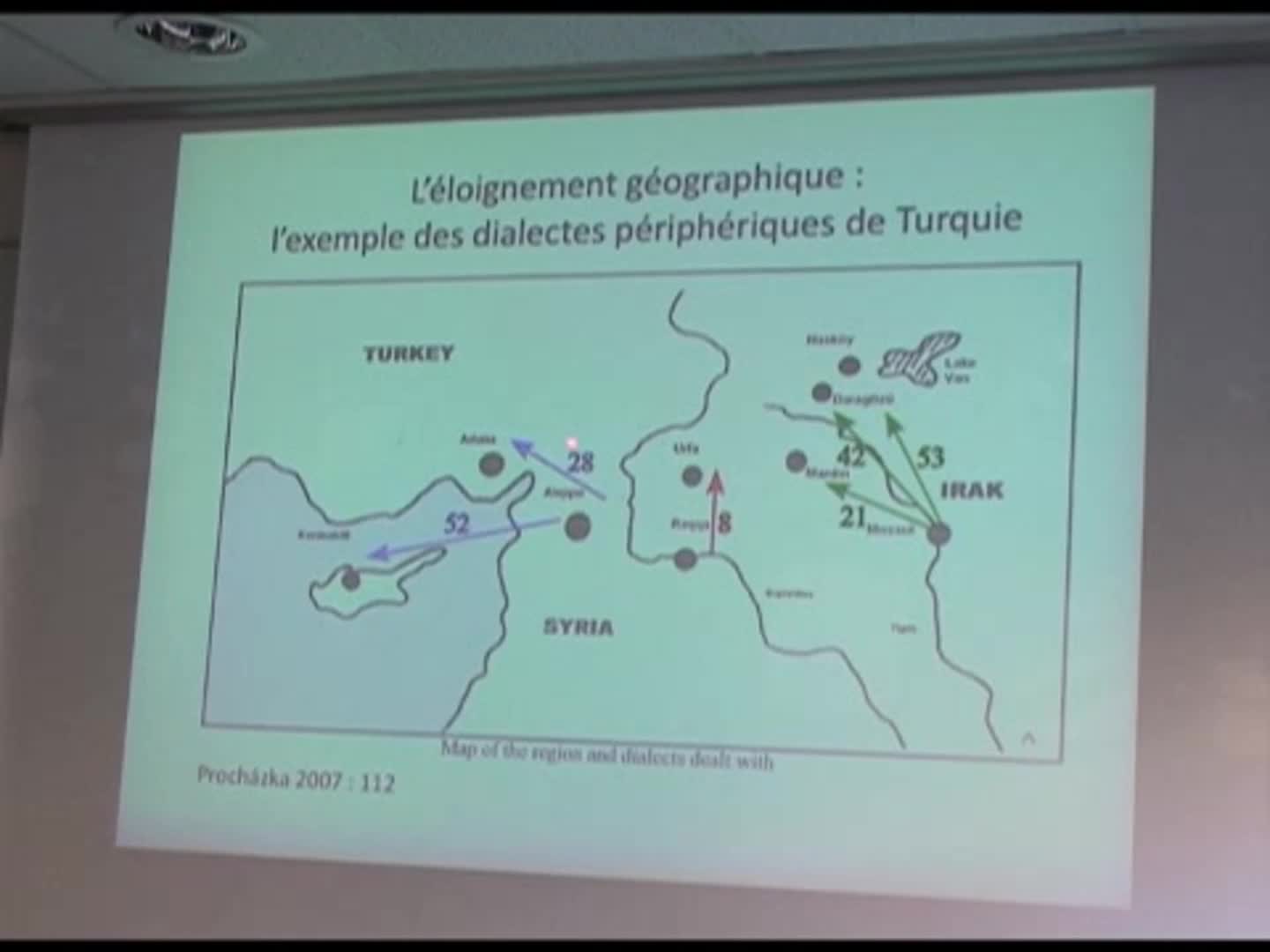Notice
Embodying Speech - Lecture 4 - Emergence in Embodied Speech : Sound Change, Ontogeny and Phylogeny (Bryan Gick 2019)
- document 1 document 2 document 3
- niveau 1 niveau 2 niveau 3
Descriptif
While any theory of speech behavior must ultimately incorporate the human body, modeling bodies has not been a central program in language research. Thinking about the body in quite tangible terms was once a prominent part of modeling speech motor behavior. Joos’ (1948) model of coarticulation was driven by overlapping waves of innervation in muscle activation patterns, while Cooper et al’s. (1958 : 939), “action plans” described speech movements in terms of an inventory of muscle activations : “we may hope to describe speech events in terms of a rather limited number of muscle groups…” Turvey et al. (1978 : 566), however, shifted focus away from bodies, observing that coordinative structures are “formally equivalent” to tasks in control space. Subsequent speech models underlying phonetic and phonological theories have continued to focus almost exclusively on abstract control space (e.g., Kelso et al. 1986) and brain regions linked to speech (e.g., Tourville and Guenther 2011, Chartier et al. 2018), with little attention given to the neurophysiology and biomechanics of embodied speech. Our research group has developed a model of embodied phonetics in which action is governed by semi-closed neuromuscular structures (“modules”), and in which these structures emerge and/or change through use. A crucial part of this research program has been the development of the ArtiSynth biomechanical simulation platform (www.artisynth.org ; e.g., Fels et al. 2003, Gick et al. 2014). Simulations of oral movementsc using ArtiSynth support this view, showing that the vocal tract offers only a small inventory of reliable, biomechanically robust actions that are harnessed again and again for linguistic and emotional expression, providing the basis for universals. These results are consistent with a theory of embodied phonetics built on an inventory of functionally defined primitives, each of which serves a specific phonetic function in speech (see Gick and Stavness 2013). Importantly, these primitives, being functionally defined, make no reference to traditional, anatomically defined body parts such as “lip” or “tongue tip”. While phonetic and phonological theories generally refer to anatomical structures such as “lips” or features such as [labial] that ostensibly make reference to body parts, such structures have remained physically undefined in theories of language. This lecture series explores the hypothesis that neuromuscular modules underlie all controllable discrete structures our nervous systems can employ. An apt model for speech sounds in a theory of embodied phonetics is not that we learn to control an inventory of sounds, but rather that we learn to build and control an inventory of highly specialized body parts, each of which is constructed, through optimization, to serve a specific phonetic function. The proposed seminar series develops these ideas and their relevance to the ontogeny, phylogeny, phonetics and phonology of speech and related functions, including digestion and respiration.
Intervention / Responsable scientifique
Thème
Documentation
Liens
Dans la même collection
-
Yvan Rose II - Survol des faits d’acquisition phonétique et phonologique et implications théoriques
RoseYvanCe deuxième séminaire débutera par un survol des données de corpus en acquisition de la phonologie, avec une emphase sur les productions linguistiques d’apprenants francophones (p.ex. France; Québec)
-
Yvan Rose I - Phonétique et phonologie de la parole enfantine: questions fondamentales, débats théo…
RoseYvanCe premier séminaire jettera les bases du cours progressif, qui s’articulera autour de questions théoriques et empiriques concernent la nature des représentations phonologiques, leur origine, ainsi
-
An embodied and situated perspective on speech and language - Labex EFL - Lecture 3 and 4: Speech a…
In this lecture, I will provide evidence from multimodal experiments in which we investigated the effect of rhythmic motions with the legs or hands on respiratory parameters, and the temporal
-
An embodied and situated perspective on speech and language- Labex EFL - Lecture 2: The forgotten a…
FuchsSusanneIn this lecture, I will talk about respiration, a biological rhythm which is flexible and adaptable and crucially involved in speech production, perception and face-to-face interactions. Based on
-
An embodied and situated perspective on speech and language- Labex EFL - Lecture 1: Changes and cha…
FuchsSusanneOver the last century, our understanding of variability in the speech signal has undergone a variety of changes. Once regarded as noise in the signal, it has now become a major topic of investigation
-
Embodying Speech - Lecture 3 - Coarticulation, Superposition, Representation (Bryan Gick 2019)
GickBryanWhile any theory of speech behavior must ultimately incorporate the human body, modeling bodies has not been a central program in language research. Thinking about the body in quite tangible terms was
-
Embodying Speech - Lecture 2 - The Parts of Speech II : Quantality and Speech Movements (Bryan Gick…
GickBryanWhile any theory of speech behavior must ultimately incorporate the human body, modeling bodies has not been a central program in language research. Thinking about the body in quite tangible terms was
-
Embodying Speech - Lecture 1 - The Parts of Speech I : Dimensionality and Modularization (Bryan Gic…
GickBryanWhile any theory of speech behavior must ultimately incorporate the human body, modeling bodies has not been a central program in language research. Thinking about the body in quite tangible terms was
-
Listening to Speech - 3 (John Kingston 2012)
KingstonJohnListening to Speech - 3 (John Kingston 2012)
-
-
Listening to Speech - 4 (John Kingston 2012)
KingstonJohnListening to Speech - 4 (John Kingston 2012)
-
Listening to Speech - 2 (John Kingston 2012)
KingstonJohnListening to Speech - 2 (John Kingston 2012)
Avec les mêmes intervenants et intervenantes
-
Embodying Speech - Lecture 3 - Coarticulation, Superposition, Representation (Bryan Gick 2019)
GickBryanWhile any theory of speech behavior must ultimately incorporate the human body, modeling bodies has not been a central program in language research. Thinking about the body in quite tangible terms was
-
Embodying Speech - Lecture 2 - The Parts of Speech II : Quantality and Speech Movements (Bryan Gick…
GickBryanWhile any theory of speech behavior must ultimately incorporate the human body, modeling bodies has not been a central program in language research. Thinking about the body in quite tangible terms was
-
Embodying Speech - Lecture 1 - The Parts of Speech I : Dimensionality and Modularization (Bryan Gic…
GickBryanWhile any theory of speech behavior must ultimately incorporate the human body, modeling bodies has not been a central program in language research. Thinking about the body in quite tangible terms was
Sur le même thème
-
Quand la BD reveille l'Antiquité
LonniMarieGallegoJulieDans ce neuvième épisode, Marie Lonni a pu échanger avec Julie Gallego.
-
Projet ORDI-GOAL - André Magord et Marlène Belly (Université de Poitiers)
Présentation du projet ORDI-GOAL – Oralité Dynamique : Grand Ouest français, Acadie, Louisiane, lauréat de l’appel à projets CollEx-Persée 2022.
-
Langue et culture créoles : Appréhender la population mauricienne à travers la socio-phonétique
ChadyShimeen-KhanFlorignyGuilhemLangue et culture créoles #13 - Appréhender la population mauricienne à travers la socio-phonétique
-
Quels ouvrages écrivent les locuteurs du croissant ?
PisuRafaëlloÉtudier les parlers locaux ne se limite pas à analyser les langues en tant que système linguistique. La sociolinguistique a pour postulat de base qu'on ne peut s'intéresser à une langue sans prendre
-
Le croissant dans l’atlas sonore des langues régionales de France
Boula de MareüilPhilippeDepuis quelques années, dans le laboratoire LISN du CNRS, on développe un atlas sonore des langues régionales de France qui prend la forme d'un site web présentant une carte interactive de France,
-
Soutenance de thèse : Robert GAVRILESCU
GavrilescuRobertGarciaBrigitteSallandreMarie-AnneNystVictoriaRathmannChristianBogdanGeluSoareElenaSoutenance de thèse : Robert GAVRILESCU Description linguistique de la Langue des Signes Roumaine. Analyse de la variation linguistique et sociolinguistique dans deux régions roumaines
-
Des langues au-delà de la parole : une réinterprétation des mains négatives du gravettien
EtxepareRicardoDes langues au-delà de la parole : une réinterprétation des mains négatives du gravettien
-
Conférence du professeur Frank Lichtenberk | Apparition et disparition des classificateurs possessi…
LichtenberkFrankConférence de Frank Lichtenberk (Université d'Auckland, Nouvelle-Zélande) | Apparition et disparition des classificateurs possessifs en austronésien / The rise and demise of possessive classifiers in
-
conférence du Professeur James A. Matisoff | Les initiales laryngales primaires et secondaires en T…
MatisoffJames A.Conférence du Professeur James A. Matisoff (Université de Californie, Berkeley) | Les initiales laryngales primaires et secondaires en Tibéto-birman | 06 mai 2009 | CNRS - Langues et Civilisations à
-
conférence du Professeur Brian Joseph | On the Need for History in Doing Balkan Linguistics
JosephBrian D.Conférence du Professeur Brian Joseph (Ohio State University) | On the Need for History in Doing Balkan Linguistics | 02 octobre 2008 | CNRS - Langues et Civilisations à Tradition Orale (LACITO)
-
ATELIER DÉSERTS. Y A-T-IL DES CORRÉLATIONS ENTRE L'ÉCOSYSTÈME ET LE CHANGEMENT LINGUISTIQUE ? | Ta…
NicolaïRobertJournée d'étude Déserts. Y a-t-il des corrélations entre l'écosystème et le changement linguistique ? | 19 octobre 2009 | CNRS - Langues et Civilisations à Tradition Orale (LACITO)
-
ATELIER DÉSERTS. Y A-T-IL DES CORRÉLATIONS ENTRE L'ÉCOSYSTÈME ET LE CHANGEMENT LINGUISTIQUE ? | De …
Taine-CheikhCatherineJournée d'étude Déserts. Y a-t-il des corrélations entre l'écosystème et le changement linguistique ? | 19 octobre 2009 | CNRS - Langues et Civilisations à Tradition Orale (LACITO)




